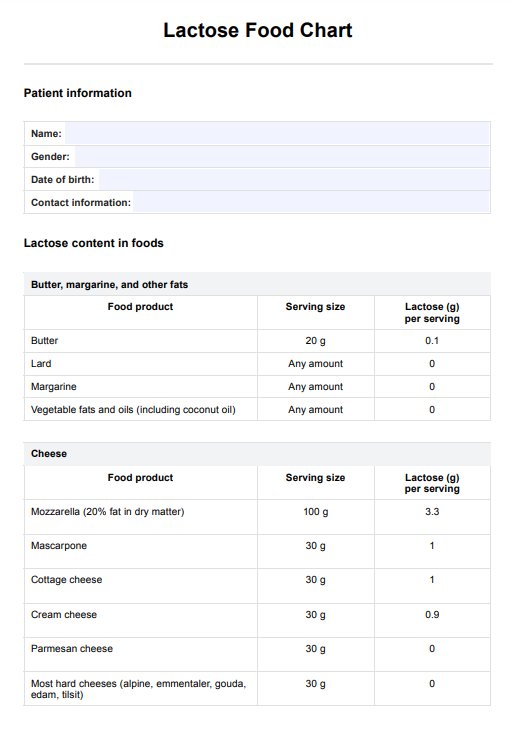Yes, there are lactose-free frozen yogurt options available. When shopping, you can find these products in stores or you can try making your own at home.

Lactose Foods Chart
Use our Lactose Food Chart to guide your clients in managing lactose intolerance effectively. Download it for free!
Use Template
Lactose Foods Chart Template
Commonly asked questions
Milk solids are the dry residue or powder that remains after milk is evaporated and all the water is removed.
Lactose is commonly found in milk products and prepared dairy foods, such as yogurt, cheese, and butter. It can also be present in processed meats, breads, and salad dressings that use dairy ingredients.
EHR and practice management software
Get started for free
*No credit card required
Free
$0/usd
Unlimited clients
Telehealth
1GB of storage
Client portal text
Automated billing and online payments











